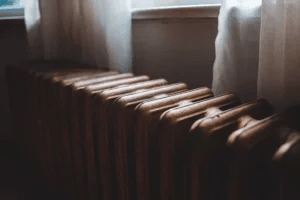When it comes to staying warm during the chilly seasons, the importance of a properly installed heating system cannot be overstated. Homeowners understand that a seamless heater installation is key to ensuring a cozy and comfortable home environment. This guide aims to provide you with essential tips for efficient heater installation Morgan Hill, CA, covering everything from choosing the right heater for your space to the final steps of installation. Whether you’re installing a new heater for the first time or replacing an old one, these insights will help you navigate the process with ease, ensuring that your home remains warm and welcoming throughout the colder months.
However, even the best-installed heaters can encounter issues, making knowledge of heater repair Morgan Hill, CA, just as crucial. In the following paragraphs, we will delve into common problems that might arise post-installation and how to address them promptly and effectively. This article not only serves as a guide for efficient heater installation but also as a resource for managing potential issues, ensuring your heating system remains in top condition. By understanding both installation and repair processes, you can enjoy uninterrupted warmth and comfort in your home. We encourage you to read through the entire article to equip yourself with the knowledge needed to handle heater installation and repair confidently.
Choosing the Right Heater for Your Home
Selecting the appropriate heater for your home is the foundational step towards efficient heating and energy savings. The vast array of options available on the market can make this decision seem daunting at first. However, by considering a few key factors such as the size of your space, the type of heater (e.g., electric, gas, or solar), and energy efficiency ratings, you can narrow down your choices significantly. It’s crucial to select a heater that is adequately sized for your area; too large, and you’ll be wasting energy, too small, and the heater will struggle to maintain a comfortable temperature, leading to potential overuse and early wear.

Additionally, take into account the climate in your area and the insulation quality of your home. These factors can influence the heating capacity required to efficiently warm your space. For those living in areas with mild winters, a less powerful heater may suffice, whereas homes in colder climates might require a more robust system. Energy efficiency is another critical consideration; opting for a heater with a high-efficiency rating can lead to substantial savings on your energy bills over time. Researching and consulting with a heating expert can provide valuable insights into the most suitable options for your specific needs, ensuring that your heater installation is both efficient and effective.
Step-by-Step Installation Guide
Beginning with a clear plan is essential for a smooth heater installation process. The first step is to determine the best location for your heater. This involves considering factors such as air circulation, proximity to windows and doors, and where you spend most of your time in your home. For central heating systems, this step has been predetermined by the layout of your ductwork. However, for standalone units, strategic placement can significantly impact efficiency and heating effectiveness. Ensure the chosen location is clear of any obstructions and allows for proper ventilation, particularly for gas heaters, to avoid the risk of carbon monoxide buildup.
Next, prepare the installation area. This might involve mounting brackets for wall units, preparing the base for a floor-standing heater, or ensuring your ductwork is clean and in good repair for central systems. For electrical heaters, ensure the power supply is adequate and meets the heater’s specifications; for gas heaters, check that the gas line is correctly fitted and leak-free. It’s critical to follow the manufacturer’s instructions closely during this phase. If you’re not comfortable with electrical or gas connections, hiring a professional is advisable to ensure safety and compliance with local building codes.
Finally, connect and test your heater. For electric models, this involves making the necessary electrical connections, grounding the unit, and switching it on. For gas heaters, once the gas line is securely connected, you’ll need to check for leaks using a soap solution before igniting the pilot light. After the heater is running, observe it for any unusual sounds or smells, which could indicate a problem. Testing the thermostat and adjusting the settings to your preference will ensure the system operates efficiently. Remember, thorough testing after installation is crucial to ensure your new heater runs smoothly and efficiently, providing comfortable warmth throughout your home.
Troubleshooting Common Heater Issues
After your heater is installed, you might encounter some common issues that can often be resolved without the need for professional heater repair. One of the most frequent problems is the heater not producing enough heat or not turning on at all. This can be due to several factors, including incorrect thermostat settings, a tripped circuit breaker, or a dirty filter restricting airflow. First, ensure that the thermostat is set to “heat” mode and the temperature is adjusted higher than the current room temperature. If this doesn’t resolve the issue, check your home’s electrical panel for any tripped breakers or blown fuses, and inspect the heater’s filter to see if it needs cleaning or replacement.
Another common issue is unusual noises coming from the heater, which can be alarming. These sounds can range from rattling to banging or whining, often indicating loose parts, a dirty burner, or problems with the blower motor. Tightening screws and securing panels can resolve rattling noises, while cleaning the burner can eliminate noises caused by debris. If the problem seems to be with the blower motor, lubrication might be needed, or in some cases, the motor may require professional attention. Before attempting any repairs, always ensure the heater is turned off and disconnected from the power source to prevent accidents. Understanding these basic troubleshooting steps can save time and money, but if issues persist, contacting a professional for heater repair is advisable to ensure your system’s longevity and safety.

In conclusion, efficient heater installation Morgan Hill, CA, requires careful planning, from selecting the right heater for your home to ensuring it is installed correctly and safely. By following the essential tips provided, you can enhance the comfort and warmth of your home while optimizing energy use and minimizing the need for frequent repairs. Remember, the key to a successful heater installation is not just about the immediate warmth it provides but also about the long-term reliability and efficiency of your heating system. For residents and homeowners, understanding these installation steps and maintaining your heater can lead to a cozier, more energy-efficient home throughout the colder months.
If you encounter challenges with your heater installation or require professional heater repair in Morgan Hill, CA, don’t hesitate to contact us. Our team of experts is equipped to handle all your heating needs, from initial installation to routine maintenance and repairs. Trusting your heater installation and repair needs to Pelle Heating & Air Conditioning ensures that you receive quality service and support, keeping your home comfortable and warm year-round. For any heating concerns or to schedule a service, reach out to us today and experience the peace of mind that comes with professional, reliable heating solutions.
